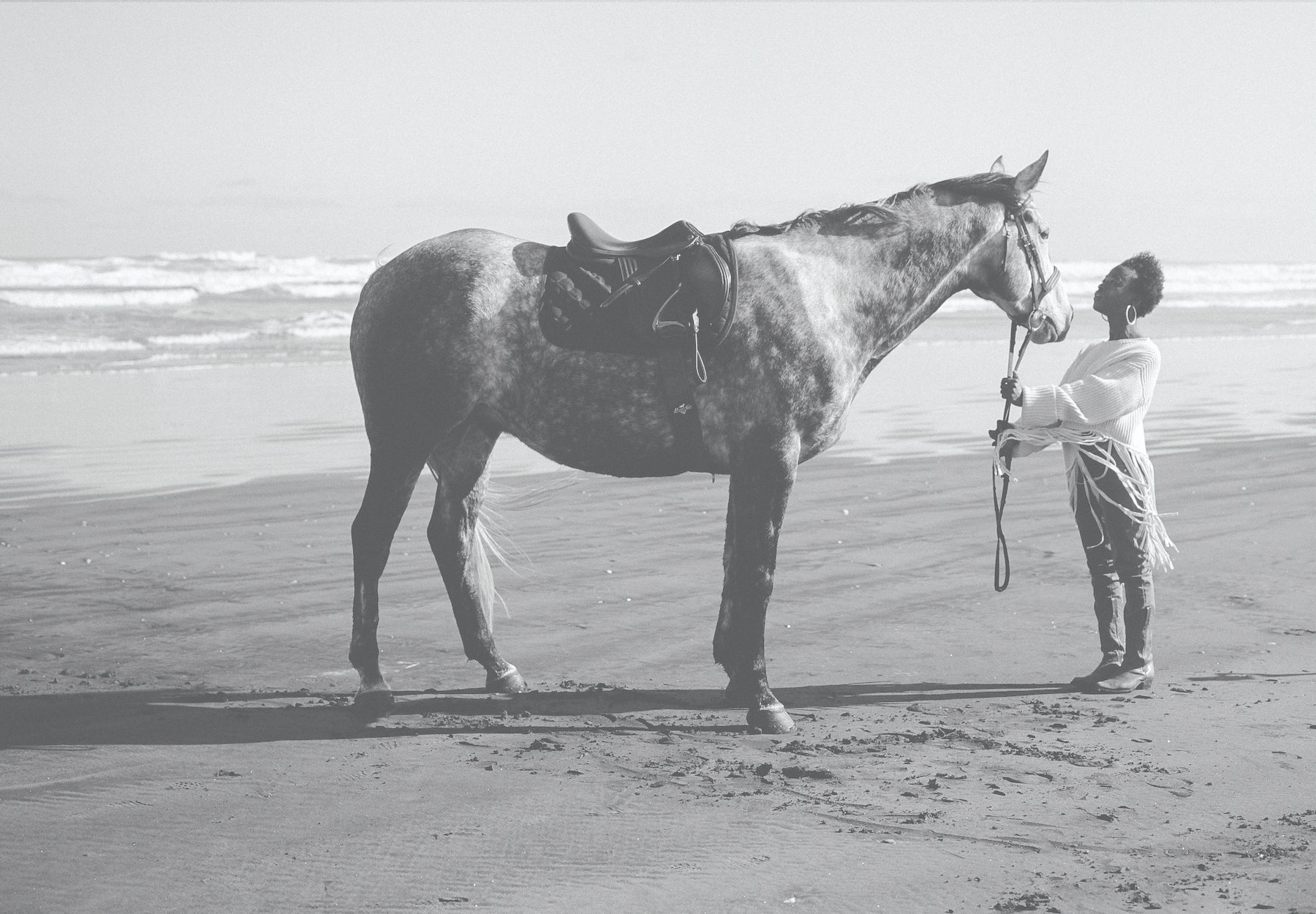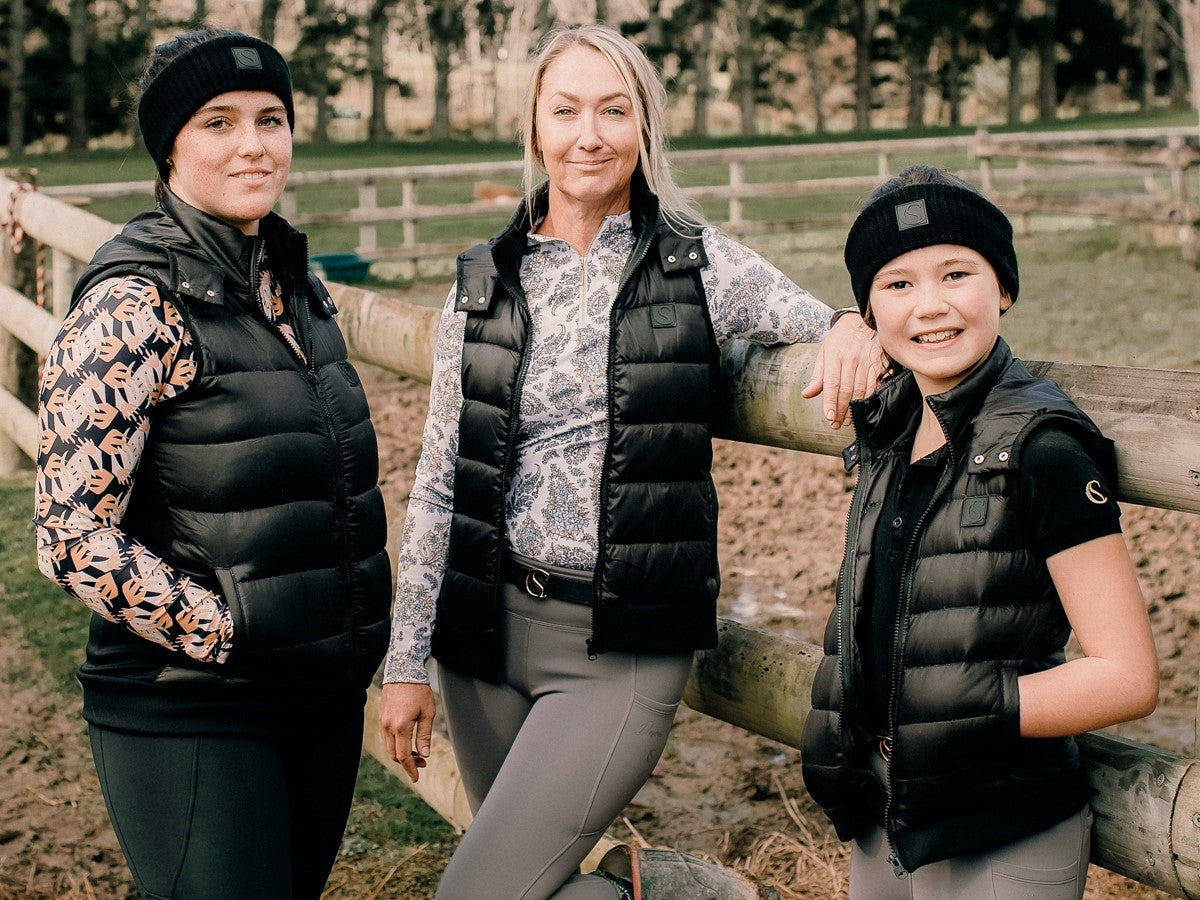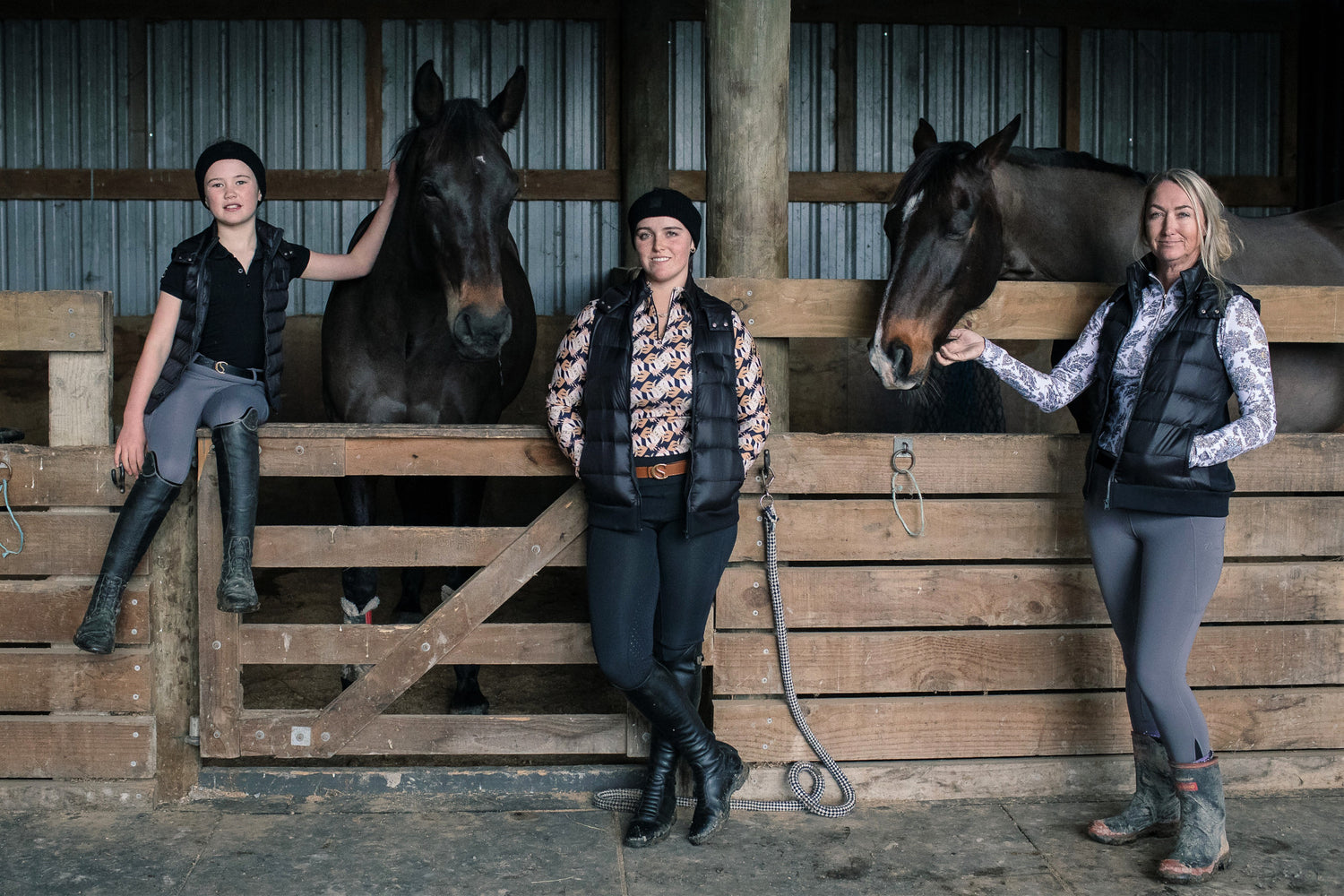Horse riding clothing – in particular ladies equestrian clothing has come a looooong way since the military inspired jackets and long skirts of the 1700s. Even more so for children's horse riding clothes - can you imagine getting your 8 year girl to ride side-saddle in a long ankle-length skirt…?!
 1800s skirts hemmed and tailored specifically for horse riding.
1800s skirts hemmed and tailored specifically for horse riding.
The 1800s saw the introduction of pants to be worn beneath long skirts for women and girls. Skirts were often made specifically for riding by dressmakers and were hemmed in a way to avoid getting caught should the rider fall off her horse. Black and dark colours became fashionable during Victorian times. By the 1900s debates were ensuing around traditional sidesaddle habits vs new fashions enabling riding astride for women.
 1927 issue of Vogue, showing current fashions for riding astride and sidesaddle.
1927 issue of Vogue, showing current fashions for riding astride and sidesaddle.
With the onset of industrialisation and motor cars, horse riding became linked to relaxation and sport in some parts of the world. Helmets became de rigueur and jodhpurs became trendy in the early 1900s. A little known fact is this equestrian fashion staple is named after its place of origin, Jodhpur in India.
 Early 1900s jodhpurs as showed off by Hollywood actress Madge Bellamy.
Early 1900s jodhpurs as showed off by Hollywood actress Madge Bellamy.
Coco Chanel was one equestrian fashion designer who trailblazed riding clothing for women based on the accepted male horse riding fashions of the day. Hollywood stars helped to glamorise jodhpurs and further their acceptance, such as Elizabeth Taylor and the 1944 film National Velvet:

In the post war years Christian Dior, Gucci and Polo Ralph Lauren all contributed to a golden age of fashion – including equestrian fashion. Haute couture designers started their own equestrian lines and elegance became an aesthetic value for horse riding fashion – in particular women’s horse riding fashion.
 1980s cowgirl inspired equestrian attire.
1980s cowgirl inspired equestrian attire.
New materials were also introduced in the 20th century including cotton-lycra, gore-tex and oilskin. By the late 20th century certified helmet technology had developed to ensure a greater variety in the appearance of helmets and safety gear for riders. The cowboy and cowgirl fashions featuring the signature taco hats of the 1970s & 80s were replaced with ventilated skunk stripe helmets.
By the 2000s low rise breeches had a limited period of being on-trend but reports of severe discomfort from show jumpers were heard and mid-rise breeches fast became a more popular alternative! A return to former fashions including velvet collars, lace detailing and rust-coloured breeches has become evident in the last few years although as we know fashion may re-invent itself but it won’t be long before one trend is pushed out by another.
Here at Saddle & Canter we look forward to seeing what trends come through next and how we can ensure you and your loved ones are on trend in your Saddle & Canter gear.



